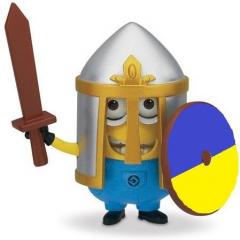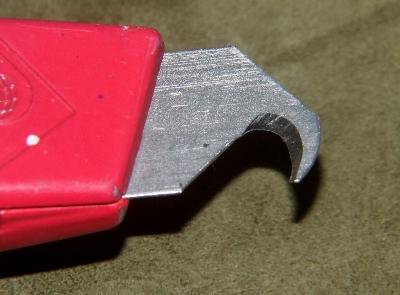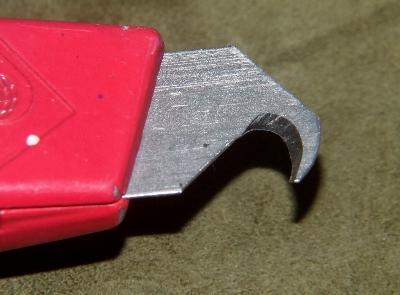-
Posts
5,931 -
Joined
Content Type
Profiles
Forums
Events
Blogs
Gallery
Everything posted by fredk
-
Another grand idea. Thanks. I'll look into 'miniatures'. Not shure bout Guinness but the whiskeys usually do them Here, as aside; about 230 years ago Guinness introduced a specially shaped bottle. It was called the 'Soldier's bottle'. It was specially designed to fit into one of the pistol holsters that the Inniskilling Dragoons had a pair of on their saddles. Allegedly, and according to legend, just before the battle of Waterloo an officer complained to the Duke of Wellington that the Inniskilling Dragoons had only one pistol, the other holster had a bottle of drink and most of the men were drunk. Wellington is supposed to have replied 'Sir, I'd rather have the Inniskillings half-armed and half-cut and here than not here at all' Also, during the battle, Wellington continuously rode up and down his lines. At one point he stopped by the the Inniskillings and said to a sergeant ' This work makes me devilishly thirsty. Give me a drink of your porter you have in your holster' The sergeant tried to deny having the drink, as it was against regulations but Wellington said 'Come man, I know you have it. Don't deny me it' Allegedly he got his drink, and rode off with the whole bottle!
-
Don't feel bad about it. I've done nothing about those steering wheels. And I have a large number of BMW torches to rebuild as well (but that ain't leather)
-
Tandy supplies a lot of its patterns in a very large page size, but also broken down to A4, or US letter size. With these I sometimes print out the A4 and tape them together. On the odd occasion I've taken the pattern PDF file to a print shop where they can print out to A0 size. To help other not used to A sizes, Start at A0, then each halving of the paper is the next A number up, or double its size to get the next lower number. One side is always common to the size on one side of it eg. A0 = 841mm x 1188mm A1 = 594mm x 841mm A2 = 420mm x 594mm A3 = 297mm x 420mm A4 = 210mm x 297mm A5 =148mm x 210mm
- 5 replies
-
- copy method
- duplication
-
(and 3 more)
Tagged with:
-
What jc means is that the arrow marking on the parts of that plough gauge is the 'Tower of London' UK Ministry of Defence marking. Everything made for the MoD and approved is marked with that arrow
-
How big is this hide?
-
Looks ok, but you need to add more eyes. Spiders have, on average, 8 eyes. That makes em that bit more scary. All dem eyes watching . . . . . you!
-
oh, man, that not like you ! you must be having an off-day. Go have an ice cold beer or iced tea and do sum thunking Inserts on; knife sheath, gun holster, man's wallet, woman's purse. A strip or two of it for hat bands Archery bracer or cowboy cuffs
-
I've looked at this sheath a few times. The lasering looks fine Now that others have spoken out I'll have my say, MY thoughts; 1. The deer (moose ?) head does not fit in with the slogan 2. No way would I use that slogan on anything associated to a person nearly killed by lightning, or anything. I'm sure a better slogan could be thought of 3. I would round off the corners on the flap. imo After a while in use those angled corners are gonna look dog-eared 4. its an 'unwritten rule' on here that if you do and show a knife sheath you've gotta show the knife as well 5. you posted at 02.55 on Tuesday 6th and complained on 00.20 on Thursday 8th. That's not a very long interlude. Members of this forum are not on 24/7 looking at everything all the time. It takes a while for responses. Heck, I've had responses to some of my postings months and even years after it was originally put up. More effective would have been a polite bump with some thing like 'any opinions anyone?'
-
I like the way you've broken away from the square or round for a coaster
-
nice idea. I'll think upon that. Maybe not candy/sweets tho. Anti-fun police won't allow that ach, shure every one knows how big he is. He's the same size as a leprechaun, or Big Foot, or the Yeti, or the fairy on that rose leaf Here those etchings are made by the leprechauns. Its their written directions to where they have secreted a crock of gold. Its written in an ancient language. Any human who could decipher it would be very rich indeed
-
I see no scrap Trim off the bad edges and just make the thing smaller
-
Brilliant! absolutely Brilliant! and done to 'orders' so quickly too
-
I prefer handles on my tools except for one; a paring / skiving knife. Like this one;
-
How many ya got to do? I would mark out the strap widths on the thicker leather. Do the stamping on them. Glue this to the thinner leather then use a strap cutter to cut the pieces from the 'block'
-
That is weely gwate !
-
I've recently taken to using this hook blade in my Stanley knife. I find it is great for rough-out cutting of pattern pieces from a large hide, to get more manageable sized pieces for proper trimming Frodo brought our attention to them back in April
-

check out this hoodicky
fredk replied to chuck123wapati's topic in Gun Holsters, Rifle Slings and Knife Sheathes
Doing a catch-up The 16mm KAM head covers a 15mm snap base nicely, but the KAM stem is loose in the snap tube. It will need gluing on -
In my almost favourite box-cutter type knife Great for rough-out cutting of pattern pieces from a large hide, to get more manageable sized pieces for proper trimming
-
A test; These letters are about 6 or 7mm high. About the size the ones you have. Then I used an ordinary writing pen with gold gel ink to just write inside the letters
-
Mostly it might be but not always. My chickens, raised for eating, were omnivores and enjoyed eating slugs and snails in the vegetable patch. The hens did as well and we avoided eating their eggs for about 4 days after they'd had a feast. Fish eat other fish to grow
-

Doc Holiday Shoulder Holster Pattern
fredk replied to internetcowboy's topic in Patterns and Templates
Try this pattern; Crafting7_web_DocHol.pdf -

Red, White, and Blue
fredk replied to DaveP's topic in Gun Holsters, Rifle Slings and Knife Sheathes
Really very most excellent ! I can envisage you getting orders for this combo, especially that knife -
Here 'vegan leather' is PVC plastic, aka 'leathercloth'






